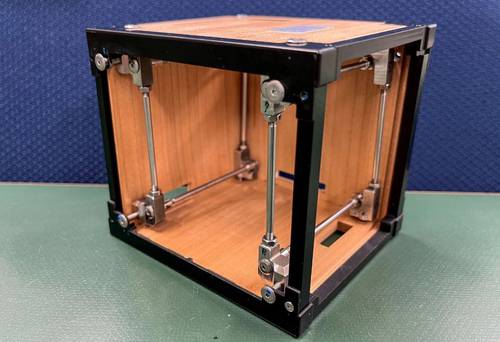Madrid. A Japanese wooden satellite, which investigates the use of this material in space, was deployed into orbit from the International Space Station in December, as confirmed by NASA.
The findings of the Lignosat project, developed by the Japanese space agency JAXA, could offer a more sustainable alternative to conventional satellites. The satellite object arrived at the International Space Station in November aboard a Space X Dragon cargo ship.
Combination of the words ligno, a prefix that means wood, and satellite, LignoSat It is a 10-centimeter cube made of magnolia wood panels 4 to 5.5 millimeters thick, with a frame partially constructed of aluminum. It has solar panels placed on some sides and weighs about one kilogram. The durability of the wood material was proven in a previous experiment aboard the station.
Japanese technique
It is built based on a traditional Japanese technique that does not use screws or adhesive materials.
Wooden satellites are considered better for the environment when burned upon re-entering the Earth’s atmosphere at the end of their operation, compared to conventional ones made of metal.
Researchers will use sensors to assess stress in wood and measure its responses to temperature and radiation in space. Geomagnetic levels will also be observed to determine if the field can penetrate the body of the wooden satellite and interfere with its technological capabilities. Research into the uses of wood in space could lead to innovative solutions in the future.
